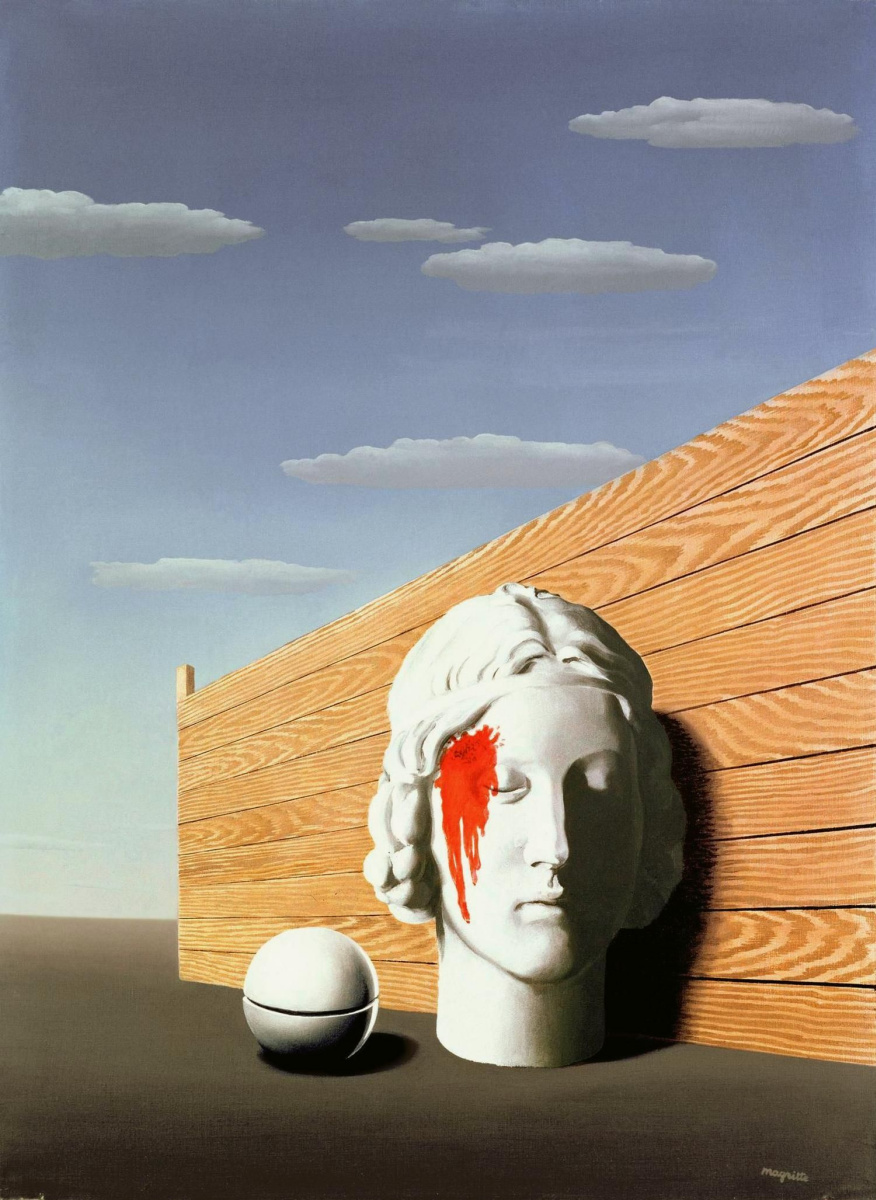Memory
Description of the artwork «Memory»
This work of Magritte was written in 1942 - at the very height of the war, the relation to which he vividly declared through the paintings created in that period. Here, the artist does not use the style of “magic” immersion, which is usual for his surrealism, when we can spend hours trying through many meanings. Here the artist’s statement is more unambiguous, which emphasizes the primitiveness of the idea of war itself and the absence of any in-depth moments in it. Just note - and this applies to all the artist's works - that Magritte did not like to impose symbols and call his art symbolic. He wanted to convey the feelings that arise when a person collides with isolated objects: in a new presentation, they carry a touch of mysticism of obscurity. Therefore, any interpretation of symbols is important, but it is improvised for understanding the central idea of work.
In the symbolism of Magritte, we can often see a ball - probably a symbol of consciousness, which is ideal in its everyday self-perception. At the same time, the artist uses the divided sphere in different senses. In the picture with the name"Act of violence" (1932) it occupies a central place. The divided sphere can be placed against the sky (as in the picture"The voice of space", 1931). The title of the last work hints at the extraterrestrial nature of parts of the spheres. And in the picture"Prohibited Literature"the ball hovers above the index finger - as in all cases, the divided sphere speaks of internal stress.
In this case, the tension arises from an event so grand that consciousness falls apart, destroying the marble indifference of our faces and leaving traces of living blood on them. Through shed blood, the war seems to take out our consciousness, leaving an indelible wound and tearing it into two parts - one begins to strive towards a clear sky for its extraterrestrial and pure nature, on which, meanwhile, images of military airships in the form of clouds are still recognizable (this the move has repeatedly used Miyazaki in his anime); the other remains in the shadow of bitter memories.
Blood is the only natural element in the picture illuminated by sunlight (all shadows fall to the right) from our world - the world of the viewer. She points to the only possible outcome of the war that was familiar to Magritte's contemporaries - blood.
In an attempt to self-recover on this dreary and empty field, a man in his naivety begins to build a new world from improvised materials - boards. In the same way, we restore the soul after strong experiences due to simple habits from the past. But the boards also point to wooden coffins in which soldiers were buried. Such a dual play of meanings of “life”, full of hope and painfully simple “death” closes the picture on the central red spot.
Margit's famous move using marble sculptures speaks of the monumental perception of not forms of people, but of their forms. Looking at this face, an antique image of the once beautiful young man with pleasant and inspired facial features pops up in his mind without a hint of imperfection. Margrit used the same image of a marble statue with a bloody stain in other works, many of which bear the same name "Memory".
It is known that Margitt’s works inspired many musicians to write songs and cover art (they didn’t remain indifferent to his work, Paul McCartney, Jeff Beck, Paul Simon, Styx, Enigma), and, I believe, it was this image that Pink Floyd used and “ visual genius ”Storm Torgerson in one of his most iconic works - a video for the song“ High Hopes ”, which contains other images and objects of the worlds of Rene Magritte.
Author: Denis Nushtaev


